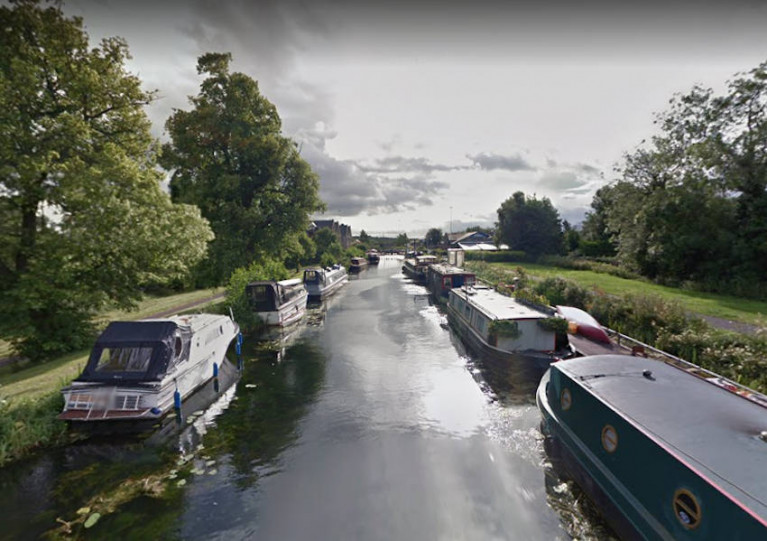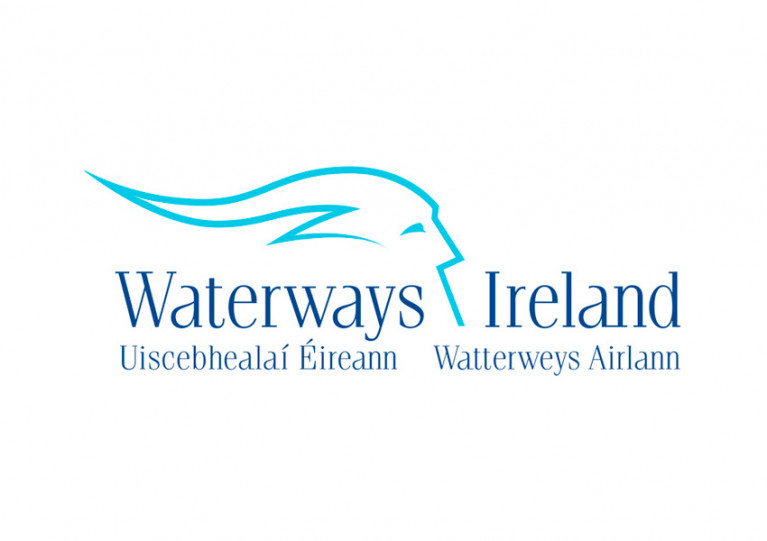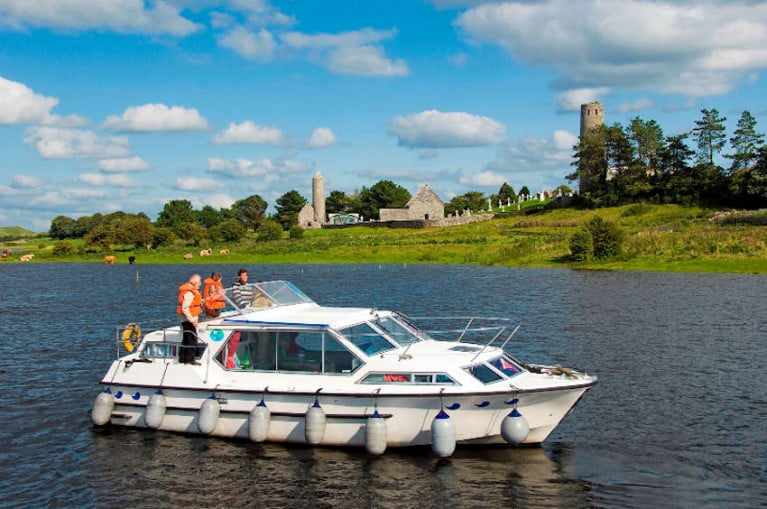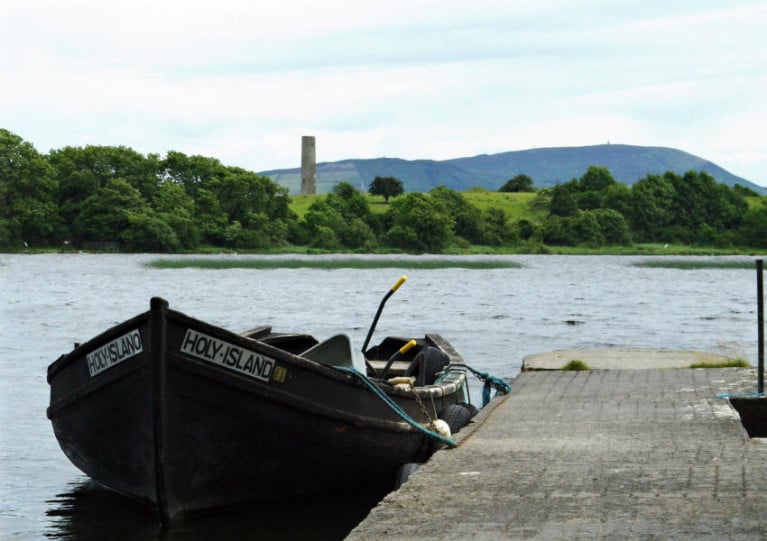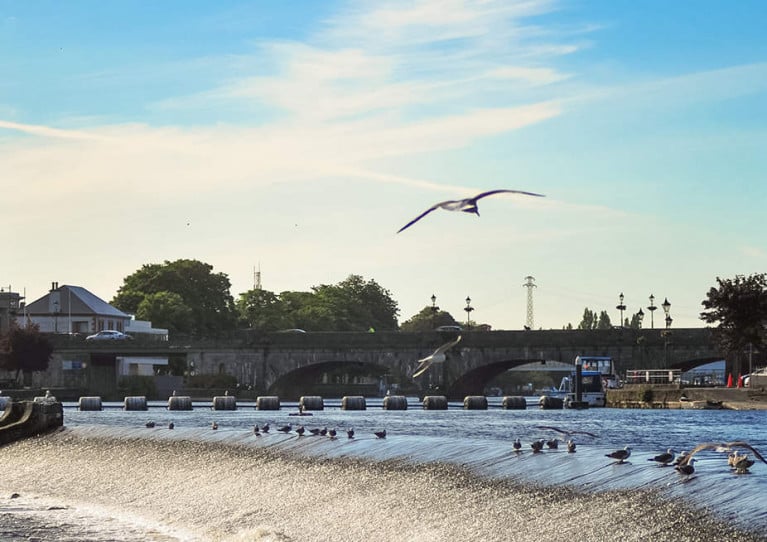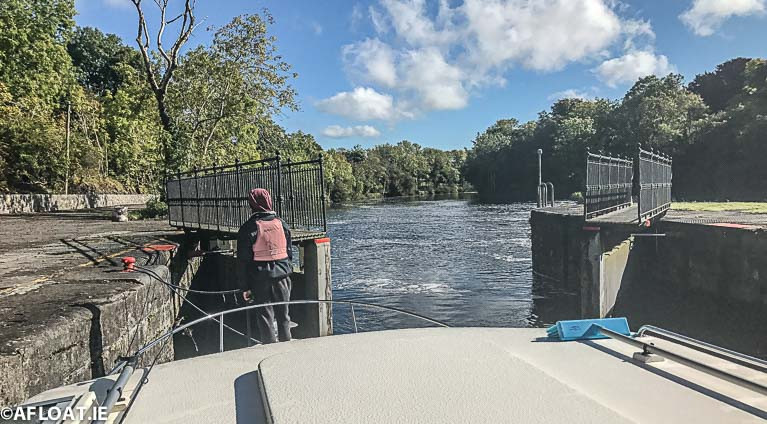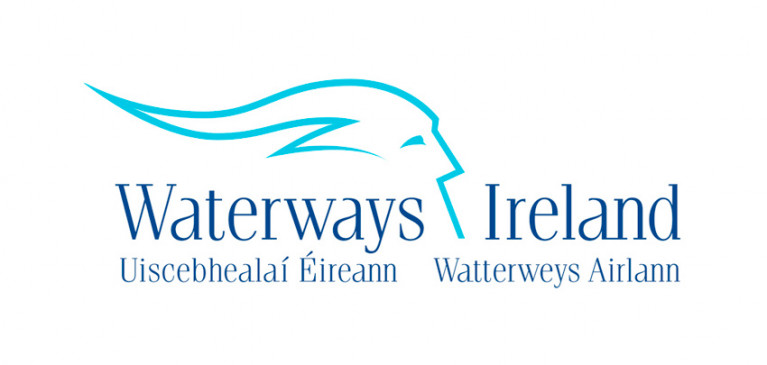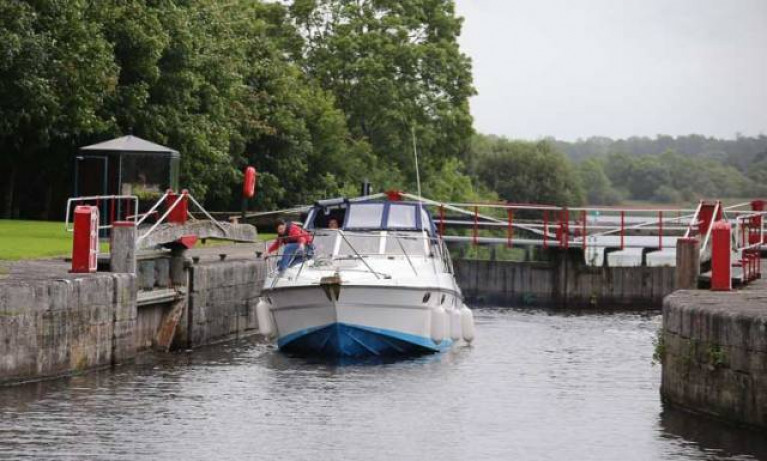Displaying items by tag: Waterways Ireland
For those of you missing Ireland’s inland waterways, you can now view the stunning Royal Canal, Grand Canal Barrow Line and Barrow Navigation along with the Shannon through Google Maps and Google Earth.
Waterways Ireland, in partnership with the Google Trekker Loan Programme, has continued to capture Ireland’s inland waterways and make them accessible online.
Last year, street view imagery was captured along the Royal Canal, Grand Canal Barrow Line and Barrow Navigation to compliment the stunning Shannon imagery captured in 2018.
So now you can follow some of Ireland’s most beautiful and popular waterways destinations from the comfort of your own home — and hopefully plan a visit when conditions allow.
As previously reported on Afloat.ie, winter mooring has been extended until Sunday 31 May to ease the pressure on the inland boating community amid the current coronavirus restrictions.
And while the outdoor exercise distance has been extended to 5k from home, the advice for those using canal towpaths to maintain social distancing remains in place.
Waterways Ireland Extends Winter Mooring To End Of May
Winter mooring facilities have been further extended until Sunday 31 May to ease the pressure on the inland boating community, Waterways Ireland has announced.
There will be no additional cost for this extension, the cross-border body for Ireland’s inland waterways confirms — as it reminds boaters not to travel to move their vessels under the current Covid-19 restrictions.
Waterways Ireland has also confirmed it will not charge an operating licence fee for the period from April to June 2020, in a move aimed at supporting businesses that operate along the waterways.
As previously reported on Afloat.ie, normal pump-out facilities remain available, and electricity and water services have been reconnected following flooding issues earlier this year, though service blocks remain closed in accordance with Government guidelines.
All other on-water activity on Waterways Ireland’s waterways remains suspended until further notice — this includes any boating, paddling, fishing or swimming.
While towpaths remain accessible for local exercise, Waterways Ireland asks the public to exercise their best judgement and continue to observe social distancing protocols.
The public consultation on the draft Shannon Tourism Masterplan and Environmental Report will close at 4pm this coming Wednesday 22 April.
Members of the public can review all the documents online and make their submission through the online survey.
The list of documents available to view are an Executive Summary, the draft Shannon Tourism Masterplan, a baseline study for the Masterplan, the Environmental Report, and AA Screen Report and Natura Impact Report.
This consultation is the next stage in an 18-month process to create a definitive document to support the development of tourism along the Shannon corridor.
Led by Waterways Ireland, with Fáilte Ireland, the steering group and working groups engaged representatives from Cavan, Leitrim, Roscommon, Longford, Offaly, Galway, Tipperary, Clare, Westmeath and Limerick county councils – which are all stakeholders in the longest of Ireland’s inland waterways.
Waterways Ireland’s message to all users of Ireland’s inland waterways this Easter weekend is to “please stay at home”.
In a statement, the cross-border body for Ireland’s inland navigations said: “We are aware that Easter is normally a time that our boating community look forward to the start of the new season, when colleagues meet up, and plan many excursions for the year ahead.
“During the Covid-19 crisis such interactions will not be possible. Our navigations have been effectively closed since 30 March in order to comply with Government guidelines.
“Operational staff, water patrollers and lock-keepers are not available to undertake lock operations on any of our navigable waterways.
“We are continuing to undertake essential management of water levels, and any emergency works that may arise, under strict social distancing protocols. We ask all our boaters to continue to observe the regulations.
Waterways Ireland reminds users of its navigations that:
- Boating activity on the water is suspended until further notice;
- Travel in excess of 2km to check on vessels moored on the navigation is prohibited until further notice;
- Winter mooring facilities have been extended until 30 April in order to ease the pressure on our boating community.
- Boaters do not need to travel to move their vessel;
- Electricity and water services have been reconnected following completion of assessments of health and safety issues in the aftermath of the recent flooding;
- Normal pump-out facilities are available for boaters. Owners must ensure that travel to pump-out facilities must be undertaken in a responsible manner, minimising the amount of essential movement out on the water;
- Canoeing, kayaking, or any paddling activities on the navigable waterways is suspended until further notice;
- Fishing is suspended on our waterways until further notice;
- Open-water swimming is suspended in our waterways until further notice; and
- All Waterways Ireland service blocks are closed in accordance with Government guidelines.
Towpaths remain open and accessible for local exercise, but Waterways Ireland asks the public to limit their use, and only use towpaths which are in close vicinity (within 2km) of your home. It also calls on people to:
- Observe social distancing protocols - keep a distance of at least 2m (6 feet) away from other people;
- Use the towpaths for brief physical exercise only;
- Limit use – do not take part in physical activity on towpaths which have the potential for large numbers, where social distancing cannot be observed comfortably;
- Don't meet up with other groups;
- Stay in your family household group;
- Stay local to your home (within 2km);
- As towpaths in some places can be narrow, when you pass someone, please make sure you use the full width of the towpath, keep moving, and stand aside to allow others to pass, in single file, when necessary;
- If you can't avoid passing a moored boat please keep as far away from it as possible and pass quickly by;
- Be mindful of others and act always with consideration and with respect; and
- Observe all health etiquettes when on the towpaths.
“We are aware that restriction of services and facilities impacts on the ability of users to enjoy our wonderful waterways,” the organisation says.
“All measures are being taken to support the national effort in keeping people safe, protecting our staff, colleagues, partners and everyone who visits, or lives on and around our canals and river navigations.
“We will continually review such measures in light of direction and advice from Government and health professionals and any decisions on service provision will be communicated.”
It added: “We ask all our stakeholders, families and colleagues to continue to be safe during the crisis. Please look after each other and enjoy the Easter break at home.”
Yesterday, Wednesday 1 April, marked 20 years since the creation of Waterways Ireland, following the Good Friday Agreement in 1998 and 1999’s British-Irish Agreement Act.
“During these days when the Covid-19 virus overshadows our thoughts, it is particularly important not to forget milestones, and people, that have brought us to where we are,” said the cross-border body for Ireland's inland waterways as it referenced a title from Blasket Islands author Muriis Ó Suilleabháin.
Fiche bliain ag fás translates as 20 years growing — a situation to which Waterways Ireland credits the hard work of its staff in tandem with public, private, community and voluntary sector bodies and individuals alike.
“We have developed the infrastructure, opening up locations as key tourism destinations, adding value to local and national economies,” it added.
“We have facilitated the opportunity for locals to get out on, and along, the waterways, providing recreational opportunities, improving their health and well-being and giving all the ability to experience new ways to enjoy the local environment.
“This has been done whilst having the greatest respect and care for the wonderful heritage and environment, on and along the waterways.
“We thank our staff for their hard work and commitment over the past 20 years in preserving and enhancing some of the island’s greatest treasures, and we especially remember our former colleagues who are no longer with us. We also thank our sponsor departments and partners for their collaboration in all that we do.”
Taking note of the ongoing pandemic response, Waterways Ireland said: “We recognise that in the current climate when we all battle to look after ourselves, our families, our communities and indeed our nation, that looking beyond next week or next month may be difficult.
“We will however spend the next 20 years ‘blooming’ with the same effort as has been shown in the past, maintaining and enhancing our waterways so that they continue to be assets of national pride in the future.
“Thank you to all who have played their part in the past 20 years, and we look forward with pride to the future.”
8,400 Boats On Shannon Navigation Shows Big Demand For Mooring & Services, Says Tourism Masterplan
The Shannon Navigation plays hosts to some 8,400 boats, according to the draft tourism masterplan currently open for public consultation.
And the figure of predominantly private leisure vessels far exceeds the number of berthing spaces, which total 4,500 across 58 locations on the inland waterways between Limerick and Lough Allen.
“While the demand for mooring outweighs supply, there are variations across the navigation in the levels of demand,” the draft adds.
It goes on to state that lock passage data implies an increase of 2,800 boat passages — from 42,700 to 45,500 — in the five years between 2014 to 2018.
And it also suggests a review of shore-based service block provision to take account of customer requirements and consider the use of ‘smart’ technologies to enhance their experience.
The Draft Shannon Tourism Masterplan is a joint initiative of Waterways Ireland and Fáilte Ireland and is part of an 18-month strategy to develop tourism along the Shannon corridor over the next decade to 2030.
As previously reported on Afloat.ie, the consultation will continue amid the latest Covid-19 restrictions, with stakeholders encouraged to engage online.
Waterways Ireland Announced Closure Of Locks To Boat Traffic & Restricted Use Of Towpaths
Waterways Ireland advises all masters of vessels and users of Ireland’s inland waterways that the following closures are in place as of midnight last night, Monday 30 March:
- All locks on all navigations are closed until further notice.
- All service blocks are closed until further notice.
- The Winter Mooring period on the Shannon Navigation and Shannon Erne Waterway has been extended until Thursday 30 April. There will be no additional cost for this extension.
Waterways Ireland is encouraging all users of vessels on its navigations not to take part in any activity on the water in order to comply with the directions of both the Irish and British Governments.
Towpaths remain open but Waterways Ireland is encouraging locals who live in their vicinity to use them in accordance with Government guidelines for brief physical exercise, within 2km of their home, always observing social distancing protocols.
Where towpaths are likely to be busy, users are asked to restrict use, where possible, and only use those towpaths which are local, quiet and largely free of moored vessels.
Waterways Ireland confirms that operational staff, water patrollers and lock keepers will continue to undertake essential management of water levels, and any emergency works that may arise, under strict social distancing protocols.
In a statement, Waterways Ireland said: “We are aware of the potential impacts for the community of these decisions, and the difficulties this may present. At this time we would normally see the season kicking off and people de-winterising their craft and finishing off maintenance to be ready to get out on the water.
“These measures are being taken to support the national effort in keeping people safe, protecting our staff, colleagues, partners and everyone who visits, or lives on and around our canals and river navigations. We will continually review such measures in light of direction and advice from Government and health professionals and any decisions on service provision will be communicated.”
In the meantime, work continues on Waterways Ireland’s Heritage Plan 2016-2020, as well as the cross-border body’s Learning Zone online portal to assist families home schooling. Waterways Ireland can be contacted by email at [email protected] or by phone.
Access to Waterways Ireland Navigations & Availability of Services - Covid-19 Measures
Waterways Ireland advises all Masters of vessels and water users of the following access to navigations and availability of services until further notice:
- All service blocks are closed until further notice (Ref MN 23 of 2020)
- Water, electricity and pump outs are being re-connected – this is an evolving process as flood levels recede and resources allow (Ref MN 21 of 2020).
- Lock & bridge passage is available on the Shannon Navigation from 9.00 am to 12.30 on weekdays and 10.00 am to 12.30 pm on Sundays – where possible please advise lock keeper in advance (Ref MN 21 of 2020).
- As the Waterway Patrollers on the Shannon-Erne Waterway will not be at work to provide support to boaters, the lock operation systems will be switched off. Vessels will therefore not be able to make any lock passages.
- The Grand Canal, Royal Canal and the Barrow Navigational locks will be operating under reduced hours of opening.
- Boat passage in and out of Dublin is postponed until further notice (Ref MN 26 of 2020).
- There are no restrictions on the Erne Navigation.
- As the lock-keepers on Lower Bann will not be at work, vessels will not be able to pass through the locks on the Lower Bann.
- The Winter Mooring period on the Shannon Navigation and Shannon Erne Waterway has been extended until 30 April 2020. There will be no additional cost for this extension (Ref MN 114 of 2019).
The network of canals, towpaths, docks and river navigations managed by Waterways Ireland remain open, but we are strongly encouraging people to stay local, and strictly observe social distancing measures. We are asking our users not to congregate, to keep moving, and allow ample space for others to pass in accordance with social distancing.
Waterways Ireland is encouraging all Masters of vessels and water users on all navigations to continue to follow the guidelines which have been provided by the health authorities.
Waterways Ireland thanks all vessel owners and operators for their co-operation in relation to this matter.
Waterways Ireland Suspends All Passage In & Out Of Dublin On Royal & Grand Canals Until Further Notice
Waterways Ireland has issued notice to masters and owners of vessels that boat passage into or out of Dublin on the Grand Canal and Royal Canal will be postponed until further notice.
This postponement also applies to bookings for Newcomen Bridge passage on the Royal Canal.
The cross-border body for Ireland’s inland waterways adds that navigations elsewhere are generally remaining open for boats.
Albert Lock and the Jamestown Canal on the Shannon Navigation recently reopened after lock gate replacement works and the easing of flooding issues.
Albert Lock & Jamestown Canal Reopen On Shannon Navigation
Waterways Ireland advises masters and owners of vessels on the Shannon Navigation that Albert Lock has been reopened to navigation following successful replacement of lock gates.
In addition, the Jamestown Canal in Co Roscommon where the lock is located has also been reopened to navigation following a lowering of flood levels.
All other inland waterways facilities currently closed following on from the recent and ongoing flood event will remain closed until further notice.

